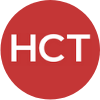How High School Students Are Preparing For Careers In Healthcare
It’s certainly no secret that healthcare is experiencing a significant shortage of talent. The U.S. Bureau of Labor Statistics projected a need for nearly 200,000 registered nurses per year through 2032. And it’s not just nurses; the Association of American Medical Colleges is expecting a shortage of up to 124,000 physicians by 2034.
But filling this need as Covid-19 shifts from pandemic to endemic has not been easy. Many healthcare professionals have left the industry due to burnout or retirement, and a shortage of nursing educators at the university level is only exacerbating the problem. But what about at the high school level? As it turns out, high school programs are starting to create a pipeline to careers in healthcare.
Here are some of the ways high school students are charting their course into the healthcare profession and what it means for leaders of healthcare organizations.
Health Science Magnet Programs And Organizations
Some high schools have begun to offer specialized magnet programs specifically to facilitate entry into the health sciences. These programs often provide a curriculum that covers various healthcare topics, such as anatomy, physiology, medical terminology and healthcare ethics.
For example, since 2014, Kettle Moraine School District in Southeastern Wisconsin has administered a public charter school dedicated to fostering students’ interests in careers in healthcare. The High School of Health Sciences partners with organizations such as ProHealth Care and the Medical College of Wisconsin to give students hands-on experience in the medical field, according to Wisconsin School News. Similarly, the state of New York’s Health Sciences Charter High School has committed to filling “the many health-related positions that remain unfilled in the Buffalo Niagara region” since 2010, according to the school's website.
Programs such as these can not only provide high school students with invaluable learning opportunities but also start building relationships that, in time, fill key organizational vacancies.
Students also have access to HOSA, formerly known as the Health Occupations Students of America. Founded in 1976, HOSA is a national organization with more than 260,000 members. It offers leadership development, networking, service projects and competitions in various healthcare-related fields. The organization also promotes healthcare-related opportunities for high school students, including internships and global experiences.
Healthcare organizations can consider participating in exhibitions, administering workshops and sponsoring conferences and scholarships.
Healthcare Organizational Opportunities
Many hospitals and clinics have internships or volunteer programs that allow high school students to gain firsthand experience in the industry. These programs typically involve tasks that are not medical in nature, such as clerical help, greeter/information desk or patient care assistance, but designating these tasks to capable high school students can allow nurses and other professionals to spend more time caring for patients. Plus, they can be beneficial to students, allowing them to observe and learn from healthcare professionals.
Some organizations have taken the next step and created programs specifically for high schoolers considering a career in medicine to gain hands-on experience. For example, Hawaii Pacific Health has partnered with local high schools to create a medical assistant training program. This program provides basic training for high school seniors interested in careers in healthcare. Students who complete the program and receive achievement of national certification are given primary consideration for employment within the health system after graduation.
Other Nontraditional Programs
Some high schools have established partnerships with local colleges or universities that allow students to take college-level courses while still in high school. These programs can provide a head start in earning college credits and exploring different healthcare career paths.
For example, in California, more than 112,000 students from the 2019-2020 graduating class participated in a dual enrollment program, which was an increase from four years prior, according to the Public Policy Institute of California.
In June 2022, four healthcare organizations in Michigan announced a program that "would allow students to earn a bachelor of science in nursing (B.S.N.) at a community college rather than transfer to a four-year college or university campus to complete their degree," Inside Higher Ed reported.
What This Means For Healthcare Leaders
While programs like these might seem out of the ordinary, they serve as a good reminder of not only how urgent the need is but also what healthcare organizations can do to help alleviate the staffing crisis with innovative thinking and getting young minds interested in healthcare sooner.
Healthcare leaders should strongly consider how they are bolstering all opportunities to alleviate staffing shortages. From my perspective, fostering direct partnerships with local high schools and programs can be a win-win, as it creates positive industry exposure for up-and-coming professionals and allows healthcare operators to build a talent pipeline long into the future.


